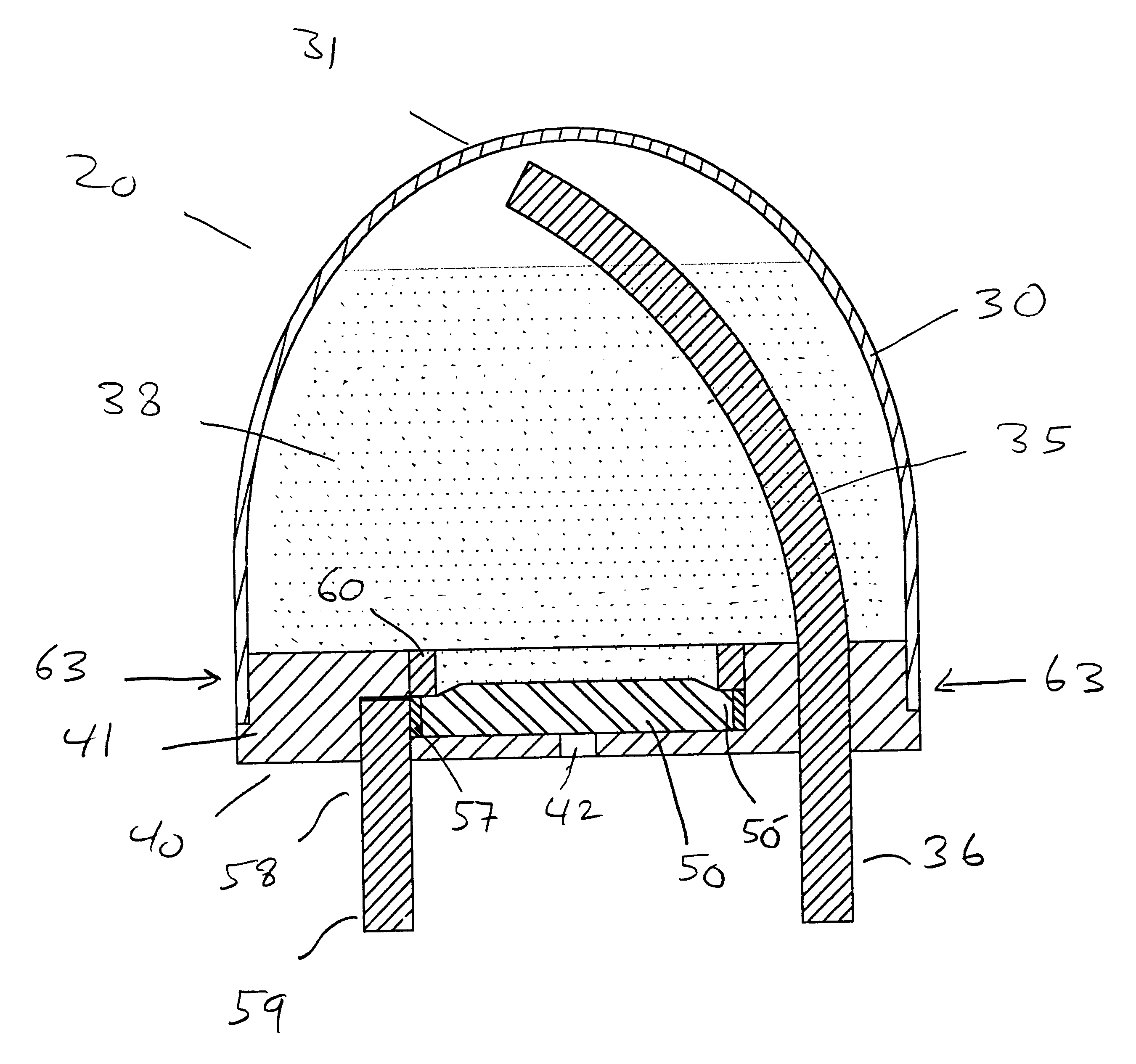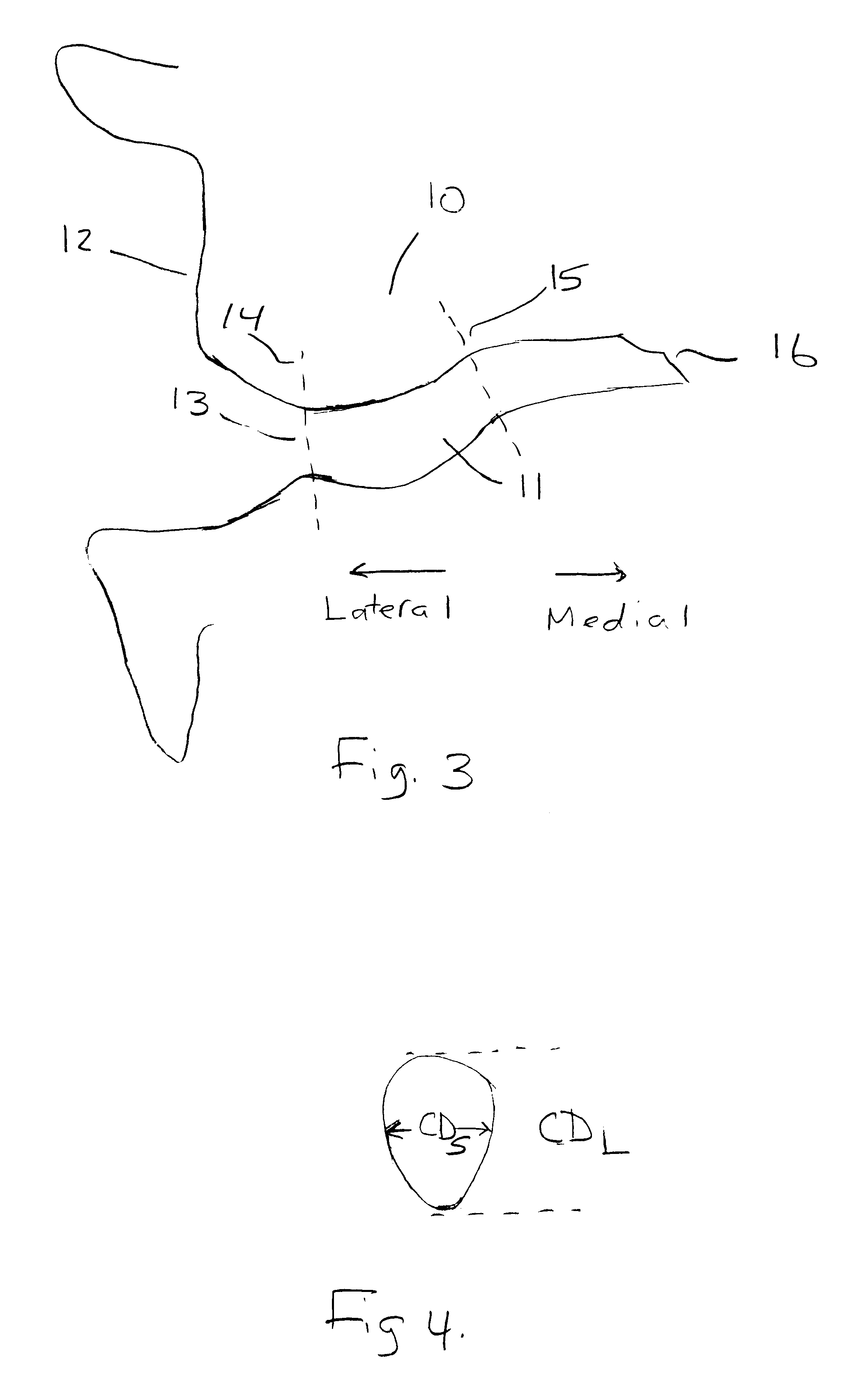Miniature plastic battery assembly for canal hearing devices
- Summary
- Abstract
- Description
- Claims
- Application Information
AI Technical Summary
Benefits of technology
Problems solved by technology
Method used
Image
Examples
Embodiment Construction
The present invention, illustrated in FIGS. 5-24, provides a plastic battery assembly having generally an elongated shell and complex non-circular cross section for fitting optimally in irregularly shaped anatomical cavities, particularly in ear canals.
In a preferred embodiment shown in FIGS. 5-8, the battery assembly 20 comprises an elongated thin plastic shell 30 having a shell opening 32 (FIG. 6) and a base unit 40 which covers the shell opening 32 from the bottom and seals the contents of the battery assembly within. The base unit 40 is comprised of a base substrate 41 preferably made of plastic for welding to the shell 30. The shape of the battery, shown in FIG. 7, is generally elongated with length (L) and oval cross section (i.e., egg-shaped, elliptical, rectangular with rounded comers, etc.) with long diameter (D.sub.L) and short diameter (D.sub.S) as shown. Long diameter (D.sub.L) is preferably about 1.5 times the length of the short diameter (D.sub.S), and length (L) is gr...
PUM
 Login to View More
Login to View More Abstract
Description
Claims
Application Information
 Login to View More
Login to View More - R&D
- Intellectual Property
- Life Sciences
- Materials
- Tech Scout
- Unparalleled Data Quality
- Higher Quality Content
- 60% Fewer Hallucinations
Browse by: Latest US Patents, China's latest patents, Technical Efficacy Thesaurus, Application Domain, Technology Topic, Popular Technical Reports.
© 2025 PatSnap. All rights reserved.Legal|Privacy policy|Modern Slavery Act Transparency Statement|Sitemap|About US| Contact US: help@patsnap.com



